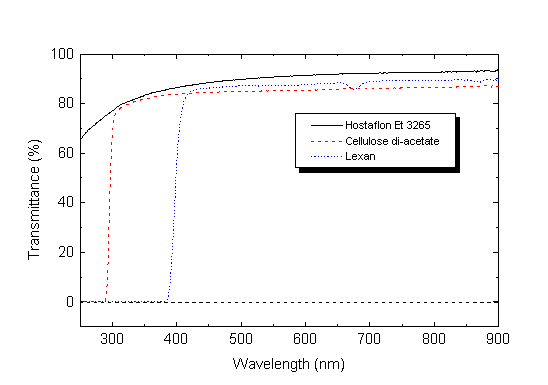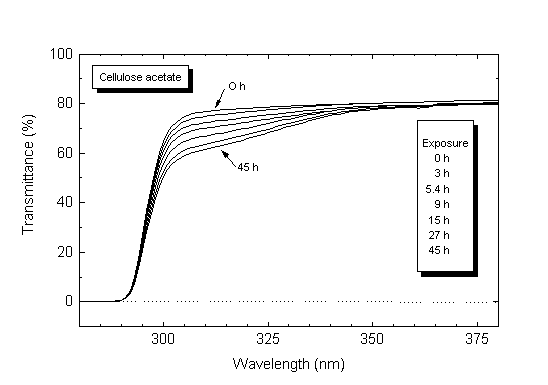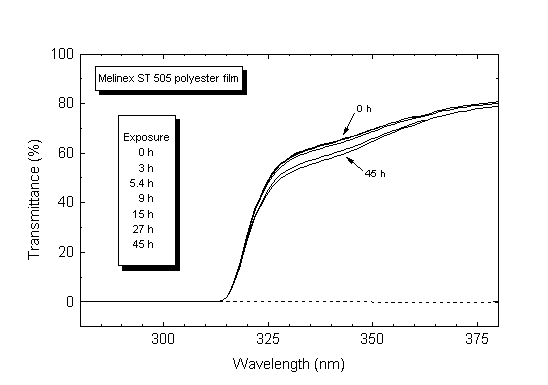[ INTRODUCTION | ULTRAVIOLET | BLUE | GREEN | RED and FAR-RED || Index | About ]
![]() This page is under construction! (Please, be patient...)
This page is under construction! (Please, be patient...)
This page contains transmittance data for plastic films that can be used in the construction of light sources, or for altering the spectral composition of natural light. They where measured with:
The most commonly used films in UV-B research are made from polyester and cellulose diacetate. Cellulose diacetate absorbs UV-C and transmits UV-B and UV-A. Polyester absorbs both UV-C and UV-B, and transmits UV-A. Polycarbonate (e.g. Lexan) absorbs all UV bands, but transmits visible light. Teflon and some related compounds (e.g. Hostaflon and Aclar) transmit part of UV-C, and most UV-B and UV-C.
Clear film and sheet plastics with different ultraviolet optical characteristics (SH-SP).

Difference transmittance spectra between polyester and cellulose diacetate films.
![]()
Aging of cellulose diacetate film in a greenhouse. Samples were located 25 cm below Q-Panel UVB-313 lamps for 9 days. Daily UV-B irradiation time varied between 20 and 300 minutes. (HP-SP) Measured by Tania de la Rosa.

Aging of polyester film in a greenhouse. Samples were located 25 cm below Q-Panel UVB-313 lamps for 9 days. Daily UV-B irradiation time varied between 20 and 300 minutes. (HP-SP) Measured by Tania de la Rosa.

See also the Melinex page.
Film and sheet plastics with different blue optical characteristics.
![]()
Film and sheet plastics with different green optical characteristics.
![]()
Film and sheet plastics with different red and far-red optical characteristics.
![]()